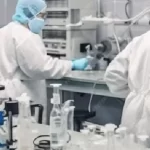Introduction:
People familiar with the pharma sector likely understand the difference between APIs and intermediates. This blog is aimed at those who may not be directly involved in the sector but contribute to it in various ways and might need clarification on the distinction between APIs and intermediates.
It doesn’t matter whether it’s API or intermediates, both are fine chemicals. Intermediates are the chemical products that are used to make final products that are called Active Pharmaceutical Ingredients (API). Raw materials (intermediates) are used to synthesize to produce a final product (API) that can be formulated with other compounds to make the final drug.
If you still have doubts, here is another example of wheat. Wheat is grinded into flour, that flour is used to make the dough and with that dough, rice buns can be made. So here the wheat flour acts as intermediate dough as API and rice buns as API formulations.
The production of APIs requires a manufacturing license, while the API intermediate manufacturers do not require a license and can be manufactured in a normal chemical factory.
Importance:
Both play an important part in the production of medications as both are interconnected drug manufacturing processes. Each of them serves a unique purpose and possesses distinct characteristics. Just like for best products, we need quality raw materials, and various intermediates as used as raw materials to produce fine-quality APIs.
What are Active Pharmaceutical Ingredients (APIs)?
Biologically active components are used in drug development that produce the desired pharmacological activity in the body. Meaning, that they directly interact with the body (pharmacological activity) and are responsible for its therapeutic effects. Active pharmaceutical ingredients are available in 2 forms, synthetic and natural. They are manufactured in various forms such as solids (amorphous/crystalline form), liquids, or even gaseous (anesthesia) states, which can be used in final drug forms like tablets, capsules, creams, or injectables. The commonly used APIs are paracetamol, ibuprofen, acetaminophen, and omeprazole
Structure:
The structure of APIs depends on their compound, composition, and molecular arrangements. Structures of APIs are specifically designed according to the intended biological targets, which can affect the stability and efficacy of the drug. The molecular structure of APIs varies based on their pharmacologic nature and their mechanism of action.
Functions:
The primary goal of an API is to produce the required therapeutic effect and treat various conditions. There are also various other essential functions of APIs other than therapeutic, such as dosing and potency, stability and compatibility, and bioavailability. APIs are required to undergo rigorous testing for safety, efficacy, and consistency before being used in formulation to produce drugs.
Usage:
APIs are used as ingredients in drugs to treat various diseases. They are used as anthelmintic, laxative, anti-inflammatory, anti-osteoporosis, and much more. Some drugs only contain one API whereas some drugs may have many APIs to treat the desired condition.
What are Pharmaceutical Intermediates?
Pharmaceutical intermediates are chemical compounds that are synthesized during the production of APIs. They are the building blocks that further undergo chemical reactions, purifications, isolations, and transformations before yielding the finished pharmaceutical products (FPPs). A few examples of intermediates are amino acids, boronic acid, ylides, benzophenones, and phosphonium salts.
Structure:
Pharmaceutical intermediates encompass a diverse array of chemical structures, ranging from simple organic molecules to complex synthetic compounds. Their structures are designed and chemically altered through isolation and purification for the formation of API.
Function:
The primary function of pharmaceutical intermediates is to serve as precursors or building blocks in the synthesis of APIs. These intermediates undergo controlled chemical transformations under specific conditions to yield the desired active ingredient with high purity and yield.
Usage:
Pharmaceutical intermediates serve as building blocks that are used during API production. They are solely used in the synthesis of API and are not directly administered to patients. The manufacturing of pharmaceutical intermediates does not require strict regulatory guidelines because it is not directly given to the patient, and is only used during the manufacturing process.
Conclusion:
Both APIs and pharmaceutical intermediates are an integral part of the pharma sector, but they serve different roles with unique characteristics. APIs represent the active ingredients responsible for therapeutic effects, whereas intermediates are intermediary compounds synthesized during the production of APIs.




